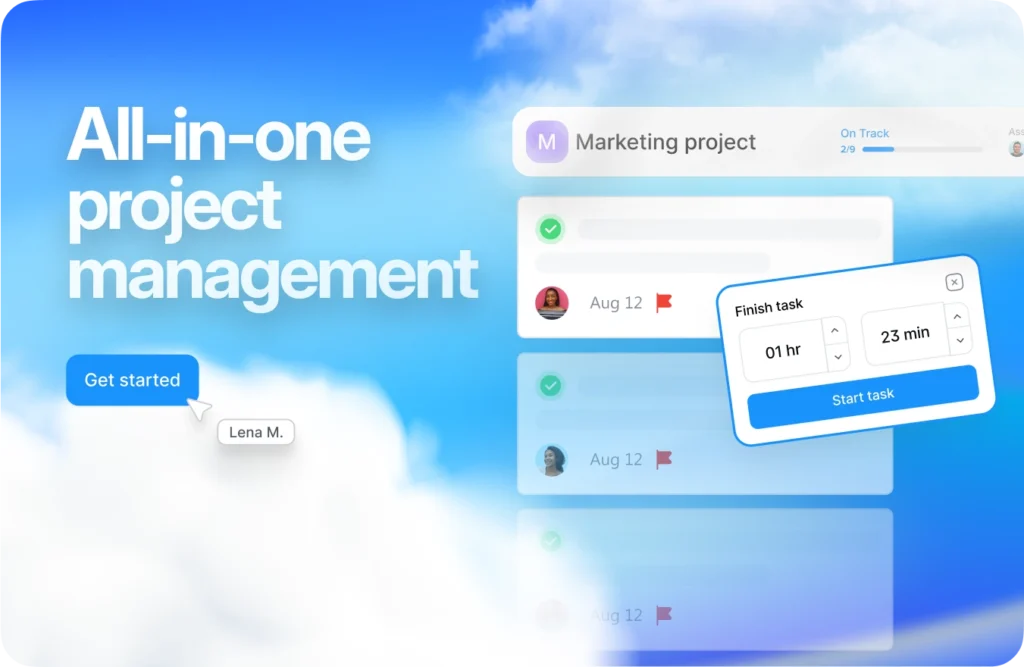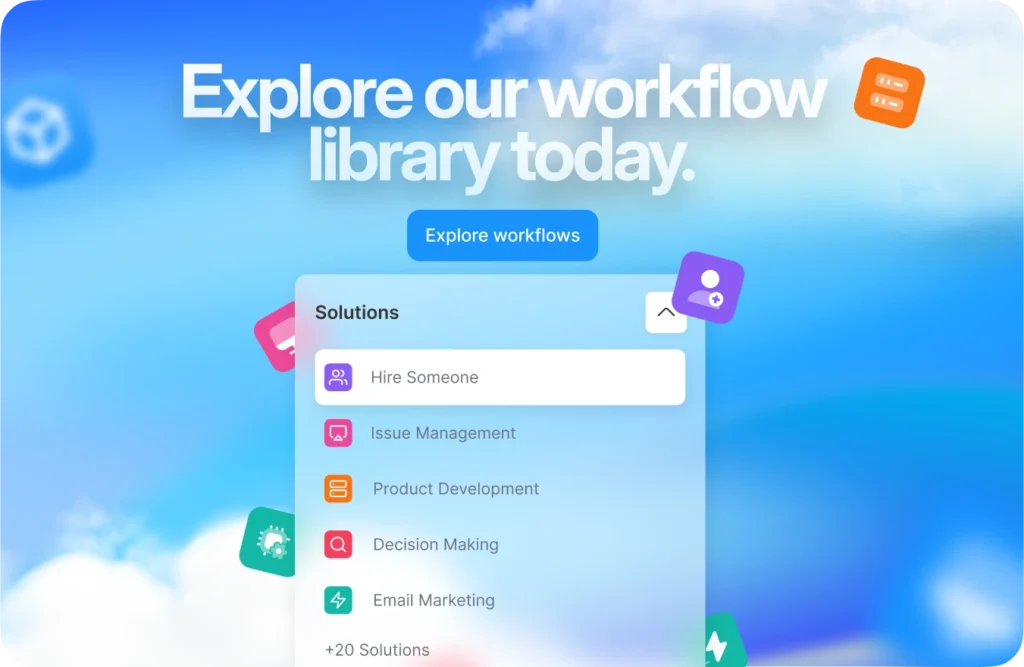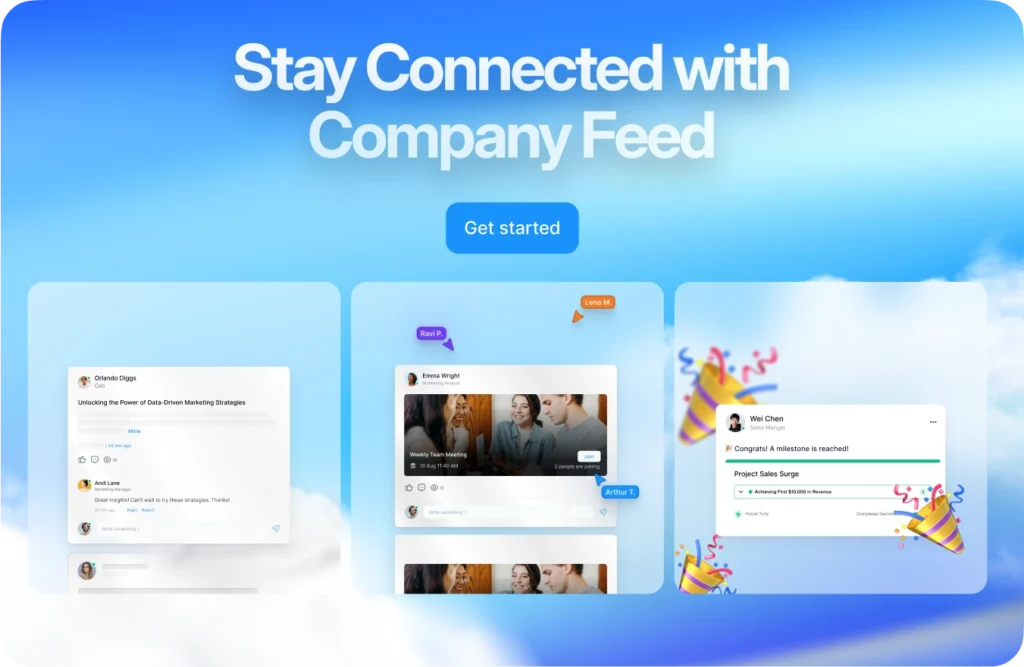9 Steps To Choose The Best Project Management Tool

Choosing the right project management tool is crucial for businesses and teams aiming to streamline workflows, improve collaboration, and ensure project success. With the vast number of options available today, selecting the best one can feel overwhelming. The wrong tool can lead to inefficiency, communication breakdowns, and missed deadlines.
To simplify the decision-making process, we’ve outlined nine essential steps to help you choose the best project management tool tailored to your team’s needs.
What is a Project Management Tool?
A project management tool is software that helps teams plan, execute, and track projects efficiently. It provides functionalities like task management, collaboration, reporting, and workflow automation.
Key Functionalities of a Project Management Tool:
- Task and project tracking – Assign tasks, set deadlines, and track progress.
- Collaboration tools – Chat, comments, and file sharing for smooth communication.
- Time tracking – Monitor work hours and productivity.
- Reporting and analytics – Generate insights for better decision-making.
By using a project management tool, teams can work smarter and improve efficiency.

Why Do You Need a Project Management Tool?
Using a project management tool offers numerous benefits, including:
- Improved team collaboration – Everyone stays on the same page with clear communication.
- Efficient task allocation – Assign tasks with deadlines and track progress.
- Meeting deadlines – Avoid project delays with structured workflows.
- Enhancing communication – Reduce emails and miscommunication with built-in messaging and file sharing.
Without a project management tool, businesses risk losing track of work, missing deadlines, and decreasing productivity—especially when trying to manage multiple remote teams or hybrid workflows.
How To Choose The Best Project Management Tool?
Step 1: Identify Your Project Requirements
Before diving into various project management tools, you need to define your specific requirements. Every team has unique needs, and understanding them will prevent you from choosing a tool that lacks essential features—just like understanding how productivity tools can impact your team’s workflow helps guide better decisions.
Key Considerations:
- Project Size & Scope – Are you handling small tasks or complex, multi-department projects?
- Team Structure – Do you need a tool for a small in-house team or multiple remote teams?
- Preferred Methodology – Do you follow Agile, Waterfall, Scrum, or a hybrid approach?
Must-Have Features:
- Task and milestone tracking
- Team collaboration and communication
- Time tracking and reporting
- File storage and sharing
By outlining these requirements, you can narrow down your options and avoid tools that don’t fit your workflow.
Step 2: Determine Your Budget
Your budget plays a significant role in choosing the right project management tool. Some tools offer free versions with limited features, while others require a monthly or annual subscription.
Pricing Models to Consider:
- Freemium Plans – Basic features for small teams (e.g., Peerbie, Trello, Asana).
- Subscription Plans – Monthly or annual fees per user (e.g., Monday.com, ClickUp).
- One-Time Payment – Lifetime license with a one-time purchase (e.g., Microsoft Project).

Hidden Costs to Watch Out For:
- Add-ons and premium integrations
- Storage and user limits
- Training and onboarding fees
It’s essential to balance affordability with the features you truly need.
Step 3: Evaluate Ease of Use
A powerful project management tool is useless if your team struggles to use it. The ideal tool should be intuitive, easy to navigate, and require minimal training.
User-Friendly Features:
- Drag-and-drop task management
- Clean and simple interface
- Mobile accessibility for on-the-go project updates
How to Test Usability:
- Check user reviews for feedback on ease of use
- Opt for tools that offer free trials
- Involve team members in the evaluation process to increase buy-in and ensure the tool aligns with their needs—an approach that becomes even more valuable when aiming to improve performance across the team.
A tool that requires weeks of training will slow down productivity instead of enhancing it.
Step 4: Assess Collaboration Features
Since most projects require teamwork, collaboration features are a must-have. Your chosen tool should make it easy to assign tasks, share updates, and keep everyone on the same page.
Essential Collaboration Features:
- Real-time chat and messaging (e.g., Slack integration)
- Shared calendars and scheduling
- File sharing and document management
Remote Work Considerations:
If your team works remotely, ensure the tool supports virtual meetings, cloud-based access, and seamless time zone coordination, as these factors heavily influence communication in distributed teams.
Step 5: Consider Integration Capabilities
A project management tool should work seamlessly with your existing tech stack. The best tools integrate with software your team already uses, such as email clients, CRMs, and accounting software.
Key Integrations to Look For:
- Google Workspace (Docs, Sheets, Drive)
- Peerbie, Slack or Microsoft Teams for communication
- Zoom for virtual meetings
- Automation tools like Zapier

Benefits of Integration:
- Reduces the need for manual data entry
- Improves workflow efficiency
- Minimizes the learning curve
Checking integration options beforehand ensures that your tool will complement rather than disrupt your workflow—especially if your team already relies on AI-powered task management solutions to stay efficient.
Step 6: Look for Customization Options
No two teams work the same way, so customization is a crucial factor when selecting a project management tool. The ability to tailor workflows, dashboards, and reports ensures that the tool adapts to your needs rather than forcing your team into rigid structures.
Customization Features to Look For:
- Custom Workflows – Adjust project stages to fit your team’s process.
- Task Dependencies – Set conditions for task completion.
- Custom Dashboards & Reports – Track the metrics that matter most.
- Templates – Save time by using project templates tailored to your industry.
Why Customization Matters:
- Enhances efficiency by eliminating unnecessary steps.
- Improves team adoption as users can adjust the interface to their preference.
- Provides more meaningful insights through personalized reports.
A rigid, one-size-fits-all tool may limit productivity, so ensure flexibility is available.
Step 7: Check Security and Compliance
Project management tools store sensitive data, from client information to financial details. Choosing a tool with strong security measures ensures data integrity and protects your organization from breaches.
Security Features to Prioritize:
- Data Encryption – Protects information from unauthorized access.
- Two-Factor Authentication (2FA) – Adds an extra layer of security.
- User Role Management – Controls who can access specific data.
- Regular Backups – Prevents data loss in case of system failures.
Compliance with Industry Standards:
If your business operates in a regulated industry, check for compliance with:
- GDPR (General Data Protection Regulation) – For handling European customer data.
- HIPAA (Health Insurance Portability and Accountability Act) – Required for healthcare organizations.
- ISO 27001 – International standard for information security management.
Choosing a tool with robust security features ensures your data remains safe while keeping your business compliant with legal requirements.
Step 8: Review Scalability and Performance
As your team grows, your project management tool should scale with you. Many businesses make the mistake of selecting a tool that works well initially but struggles under increasing workload demands.
Scalability Considerations:
- User Capacity – Can it support more users as your team expands?
- Storage Limits – Will you need to pay for additional storage as projects accumulate?
- Performance Under Heavy Workload – Does the tool slow down with large projects?
Cloud-Based vs. On-Premise Solutions:
- Cloud-Based Tools – Offer scalability, remote access, and automatic updates (e.g., Asana, Trello, Monday.com). On-Premise Solutions – Provide greater control and security but may require IT management (e.g., Microsoft Project Server).
Selecting a scalable tool ensures that your investment remains valuable in the long run.
Step 9: Take Advantage of Free Trials and Demos
Even after thorough research, hands-on experience is the best way to determine if a project management tool meets your needs. Most providers offer free trials or live demos to help you make an informed decision.
How to Effectively Use Free Trials:
- Test Real Projects – Simulate actual workflows rather than experimenting with random tasks.
- Involve Key Stakeholders – Get feedback from project managers, team leads, and employees who will use the tool daily.
- Compare Multiple Tools – Try 2-3 top choices and assess how they perform against each other.
- Assess Support & Training Resources – Look for knowledge bases, live chat, or customer support responsiveness.
Key Questions to Ask During a Demo:
- Is the interface intuitive and easy to navigate?
- Does it provide the features and integrations we need?
- How responsive is the customer support team?
Using free trials wisely ensures that you choose the best tool without committing to something that doesn’t work.
Choosing the best project management tool is a crucial step toward improving productivity and collaboration within your team. By following these nine steps—identifying project needs, determining a budget, evaluating ease of use, assessing collaboration features, checking integrations, prioritizing customization, ensuring security, considering scalability, and testing free trials—you can confidently select the right tool for your organization.
Remember, the perfect project management tool isn’t just about having the most features; it’s about aligning with your team’s workflow and making project execution seamless. Take your time, involve your team, and choose a tool that supports your business growth.

